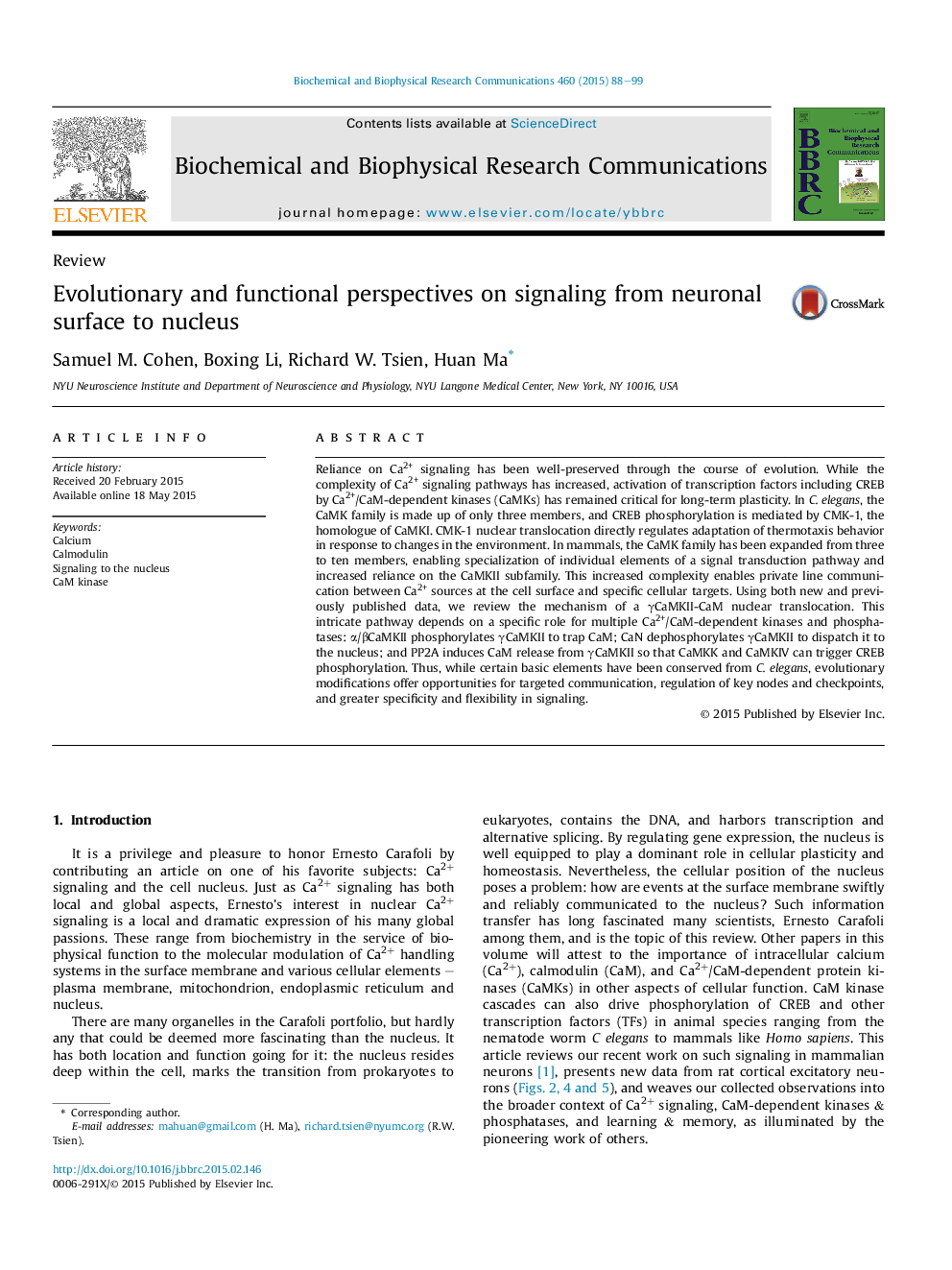| Article ID | Journal | Published Year | Pages | File Type |
|---|---|---|---|---|
| 1928210 | Biochemical and Biophysical Research Communications | 2015 | 12 Pages |
Reliance on Ca2+ signaling has been well-preserved through the course of evolution. While the complexity of Ca2+ signaling pathways has increased, activation of transcription factors including CREB by Ca2+/CaM-dependent kinases (CaMKs) has remained critical for long-term plasticity. In C. elegans, the CaMK family is made up of only three members, and CREB phosphorylation is mediated by CMK-1, the homologue of CaMKI. CMK-1 nuclear translocation directly regulates adaptation of thermotaxis behavior in response to changes in the environment. In mammals, the CaMK family has been expanded from three to ten members, enabling specialization of individual elements of a signal transduction pathway and increased reliance on the CaMKII subfamily. This increased complexity enables private line communication between Ca2+ sources at the cell surface and specific cellular targets. Using both new and previously published data, we review the mechanism of a γCaMKII-CaM nuclear translocation. This intricate pathway depends on a specific role for multiple Ca2+/CaM-dependent kinases and phosphatases: α/βCaMKII phosphorylates γCaMKII to trap CaM; CaN dephosphorylates γCaMKII to dispatch it to the nucleus; and PP2A induces CaM release from γCaMKII so that CaMKK and CaMKIV can trigger CREB phosphorylation. Thus, while certain basic elements have been conserved from C. elegans, evolutionary modifications offer opportunities for targeted communication, regulation of key nodes and checkpoints, and greater specificity and flexibility in signaling.
